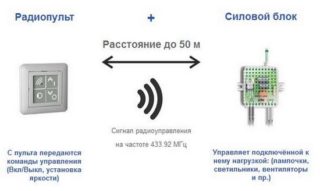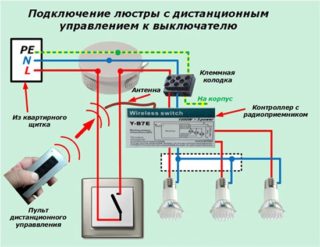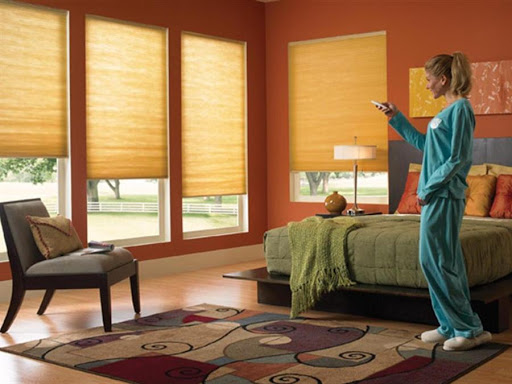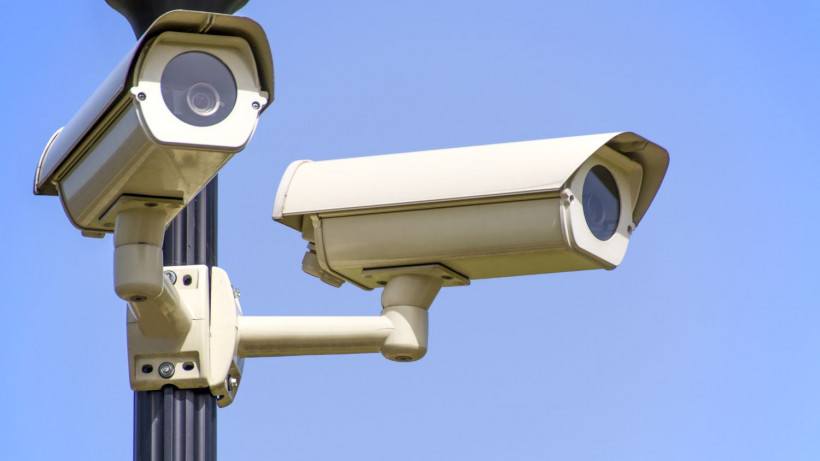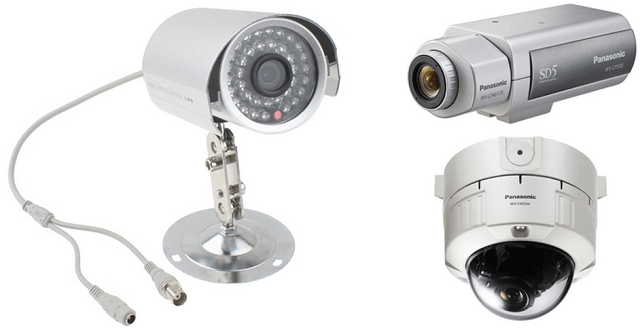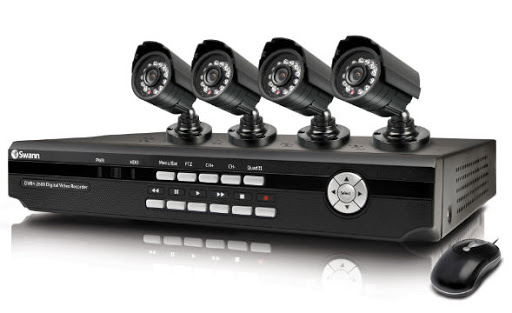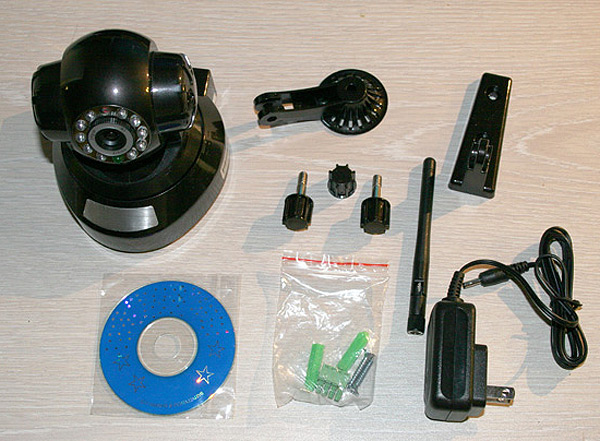Remote control of lighting is carried out using a special remote control, which makes the operation of lighting devices more simple and convenient. Devices of this type are presented in several versions, have their own characteristics, advantages and disadvantages that must be considered when choosing.
How the remote control works
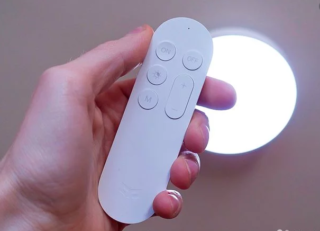
Remote-controlled lighting is most commonly used in offices and industrial buildings, but it is becoming more and more popular for residential applications as well. The most popular are control systems, which need to be controlled using a motion sensor connected to a radio wave switch. Mobile phones, computers and mini-controllers are also used for this purpose. To change the lighting settings from anywhere in the territory, by pressing the buttons on the remote control, devices capable of transmitting radio signals are mounted in the wiring. They activate the exchange of data packets with information that go from the central part of the system to the remote control device.
The package can include codes responsible for various commands, they can also be programmed according to the needs of the user. In some cases, problems may arise due to too long a distance, which are solved by setting the repeat option to the console, which transmits data with the desired regularity and sequence several times. When choosing a device, you need to take into account that each remote-type switch, after connecting to a common network, receives its own individual network address. For this reason, some signal transmitters can only respond to commands stored in the memory of the controls.
The basic functionality of the remote control device includes the ability to turn on and off lamps at a distance, change modes and set settings. Users can turn off lighting devices partially in a specific segment of the room, which saves energy and uses the light flux at their own discretion. Modern systems provide the ability to memorize and fix the settings, so the user does not have to constantly adjust the light, it is enough to program the remote control for several stages of lighting change.
Most of the remotes are equipped with sound and light signaling devices that allow you to find them in case of loss.
Variety of control panels
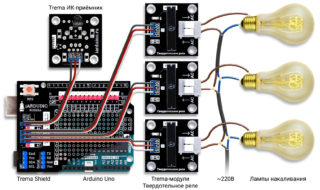
An ordinary remote control device has certain technical characteristics. This includes its maximum power of up to 12 milliwatts, a range with operating frequencies that can range from 450-900 megahertz and the power of a switched element from 300 W to 6 kW. The distance of actuation in the direction from the main room is usually 40-500 meters. The important parameters are the power of the transmitter and receiver for the signal; the distance of the active operation of the device will depend on them. The first parameter is considered the main one, since it is responsible for the responsiveness and speed of response of the system options.
Infrared controlled
IR systems are most often used to control outdoor lighting, including for parking lots, warehouses and public areas.Infrared remote controls are similar in design to ordinary TV remote controls, they are simple and easy to use.
There are also disadvantages - they will function only with light sources that are located in maximum visibility at a distance of up to 10 meters from the device.
The principle of operation is not complicated: when the module receives an IR signal, it converts it into a radio wave and sends it to the controller. The control method in this way makes it possible to monitor the functioning of the lamps from several places at the same time.
By radio
By mobile phones or via the Internet
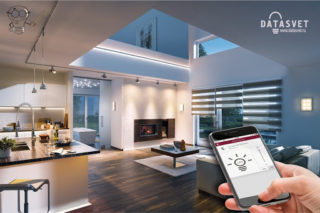
The light control unit is used in smart home systems and can be controlled by a connected smartphone using an application or the Internet if there is a separate remote control device. The phone makes it possible to set up lighting without a remote control, create a "presence" outside the controlled area, and also set up the desired lighting scenarios in a residential building. In this case, lighting control is performed using a Wi-Fi signal. To configure, you need a smartphone itself with an installed application, an executive device and a Wi-Fi router, which is responsible for transferring data between the phone and the controller. Internet connection is carried out using special software that is compatible with a specific lighting system.
Users can set any commands via a smartphone and customize lighting fixtures according to their needs, including turning on and off all lamps, chandeliers and other devices, changing brightness, color temperature and other parameters.
Connection rules
When developing a system for a yard or garden that needs to be controlled using a remote control, it is better to choose powerful radio devices that can exchange signals at a distance of up to 200 meters. To change settings, including brightness or blinking frequency, shutdown and shutdown, all circuits with elements at the output must consist of semiconductor transistors. In addition to the remote system, voice control can be configured with auxiliary power wires.
Some types of remote controls can be mounted in any suitable place and used as control units. In this case, they are placed instead of standard switches or in front of a certain lighting fixture.
Criteria for choosing a light control panel
When choosing a remote control for lighting control, you need to consider the characteristics of this device, including the type of available bulbs, dimensions and its appearance, including body materials, color, shape and number of keys. The important parameters are the operating voltage range, the number of channels, the radius for signal coverage and the level of the rated current.To avoid possible malfunctions and malfunctions, pay attention to the maximum permissible operating load and the list of operating frequencies. In addition, the method of transmitting the command signal, the coding and the type of power supply of the transmitter will be important.
When buying, you should know in advance the warranty period for the remote control from the manufacturer and the addresses of service centers, where you can get information on maintenance and repair.
Advantages and disadvantages of devices
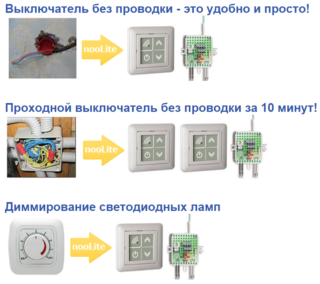
Remote switching off and on the light, as well as the implementation of other options using a controlled remote control significantly simplifies the work with the industrial or home lighting system. In addition to the ability to control light streams from different distances, this device has additional advantages:
- the ability to adjust lighting from maximum to minimum value;
- reasonable consumption of electricity;
- creating the effect of being inside the premises or on the territory, which increases the level of security;
- maximum comfort when working with the remote control;
- combining all lighting devices into one network and controlling it using one device;
- no need to lay additional cables due to easy connection of the device to the control system;
- no problems with upgrading the working system, if you need to connect new devices;
- complete safety of use;
- constant monitoring of all lighting elements.
Users note the high cost of such devices and the problem of false triggering of motion sensors that can respond to warm air or sunlight. When the device is used from the outside, the accuracy of its response deteriorates due to atmospheric precipitation or when it is located near signals with electromagnetic radiation.
Review of popular models
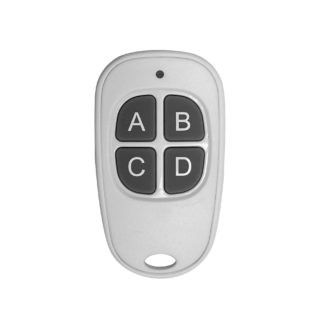
There are a large number of different remote controls for lighting control on the market, among which there are models that have received many positive user reviews.
- HiTE PRO SN-S2. The device can operate at temperatures from -30 to +50 degrees, which makes it possible to use it to control outdoor lighting. According to the manufacturer, the remote control can operate on one battery for several years without the need to replace it. The control range of the light source is 250 meters. The device is fixed on self-tapping screws or using double-sided tape according to the instructions, if it is mounted on a wall.
- Rubetek RE-3316. The single-channel remote is synchronized with a smartphone and is a switch that can be used for lighting devices and other devices. Differs in ease of maintenance and installation.
- FERON TM72 23262. Two-channel remote control, operating at a distance of up to 30 meters. It is not recommended to install it from the outside of the premises, since it can operate at a minimum temperature of at least -14 degrees.
The choice of a suitable device depends on the needs of the user and the particulars of the particular lighting system. You also need to take into account the way the remote control is operated, its design and the availability of additional functions.

